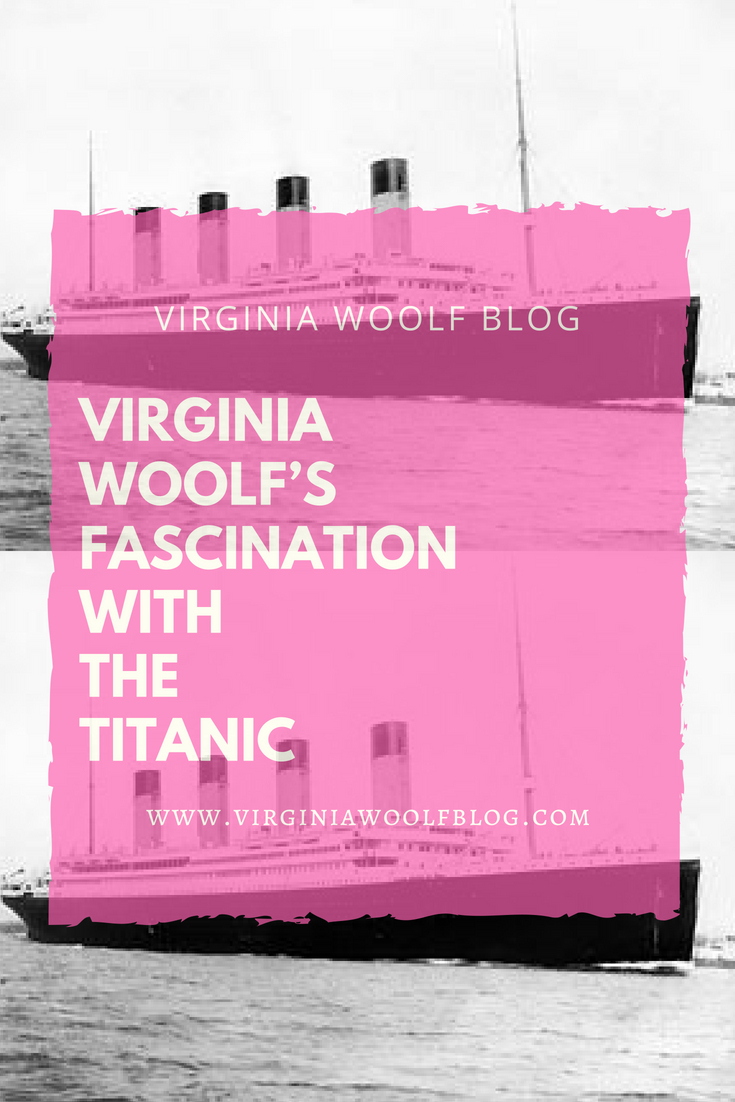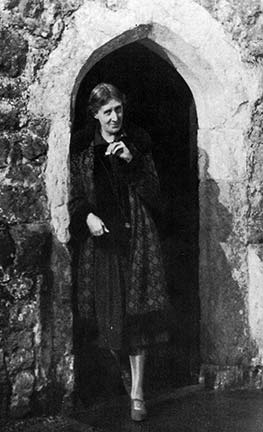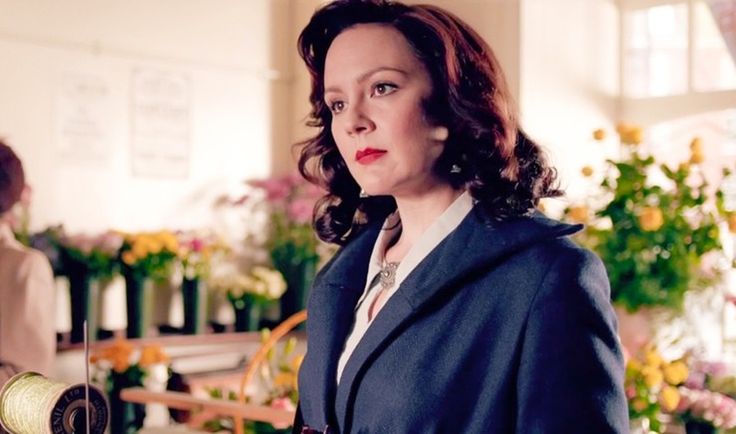
After the Titanic sank on April 15, 1912, Virginia Woolf developed a fascination with the disaster and even toyed with the idea of writing about it.
According to How to Survive the Titanic, a book about the chairman of the White Star Line, J. Bruce Ismay, Virginia wrote a letter to her friend Katherine Cox shortly after the ship sank, discussing her interest in the wreck:
“What I should really like to do now, but must refrain, is a full account of the wreck of the Titanic. Do you know it’s a fact that ships don’t sink at that depth, but remain poised half way down, and become perfectly flat. So that Mrs. Stead is now like a pancake, and her eyes like copper coins.”
Virginia’s interest in the Titanic even prompted her to attend the British Board of Trade’s inquiry hearings on the disaster in the spring and early summer of 1912.

Virginia was not alone in her fascination as the hearings, which were held mainly at the Royal Scottish Drill Hall in London, drew large crowds with many notable people attendees, such as the wife of Prime Minister Herbert Henry Asquith, Count Aleksandr Beckendorf, the Russian Ambassador to London, as well as members of Parliament.
In a recent article about the anniversary of the disaster, published in the University of British Columbia publication the Arts Wire, professor Ira Nadel states in an interview that Virginia had an obsession with water which greatly influenced her work:
“Virginia Woolf with her new husband Leonard attended the official board hearings that investigated the disaster. And she was obsessed with water and writes about it continuously. And it probably originates from her being six months old, when her family would go to St. Ives in Cornwall, and they rented a house right at the edge of the sea, which becomes the focal point of her novel To The Lighthouse in 1927. In her diaries and throughout her life, she’s obsessed with the way water – particularly oceans – can destroy lives and one’s being. And of course, she dies by drowning in 1941. So the Titanic became symbolic of both the danger and the romance of the sea.”
An article from 2002 in the Los Angeles Times also makes note of Virginia’s obsession with water and drowning:
“Particularly disturbing are Woolf’s references, found in many of her works, to being drowned, blissfully sinking below the surface. As a 21-year-old, for example, Woolf took a newspaper mention about a woman who committed suicide by drowning and wrote a provoking, highly subjective essay taking on the thoughts of the drowned woman…Knowing how Woolf’s life would end, these references chill. ‘What a born melancholiac I am!’ Woolf is quoted in a diary entry. ‘The only way I keep afloat is by working…. Directly I stop working I feel that I am sinking down, down. And as usual, I feel that if I sink further I shall reach the truth.’”
The Titanic disaster also occurred at a difficult time in Virginia’s life when she was suffering from numerous mental breakdowns and was heading towards another suicide attempt.
As a result, her thoughts sometimes drifted towards death and destruction.
This possibly explains why she stated that she “must refrain” from writing about the Titanic, although she also may have refrained out of respect for the victims and their families.
Although Virginia never did write about the Titanic, she did publish her novel The Voyage Out just a few years later, which is a story about a young woman embarking on a long journey of self-discovery on her father’s ship. Much like the Titanic victims, the young woman never returns home.
Sources:
The Los Angeles Times; Woolfs Mental Illness: Obstacle or Enabler in Her Art”; Bernadette Murphy; April 2002: http://articles.latimes.com/2002/apr/16/news/lv-books16
The Arts Wire; Three UBC Profs Discuss Titanic’s Role in Popular Culture; Nick Lewis, April 11 2012
http://wire.arts.ubc.ca/featured/titanics-timeless-allure/
How to Survive the Titanic; Frances Wilson; 2011








